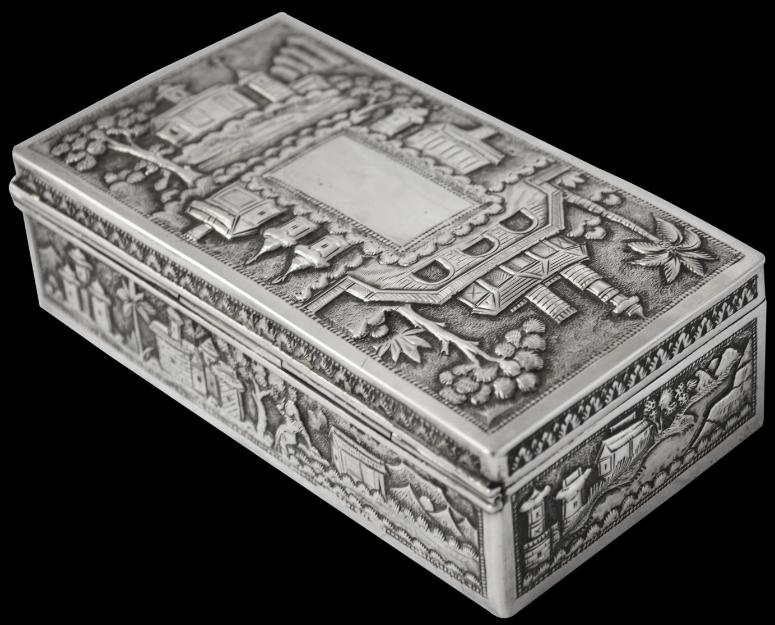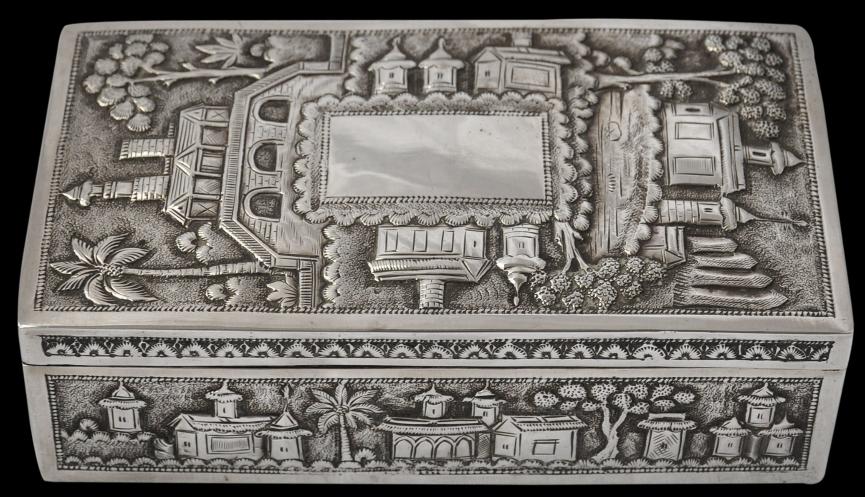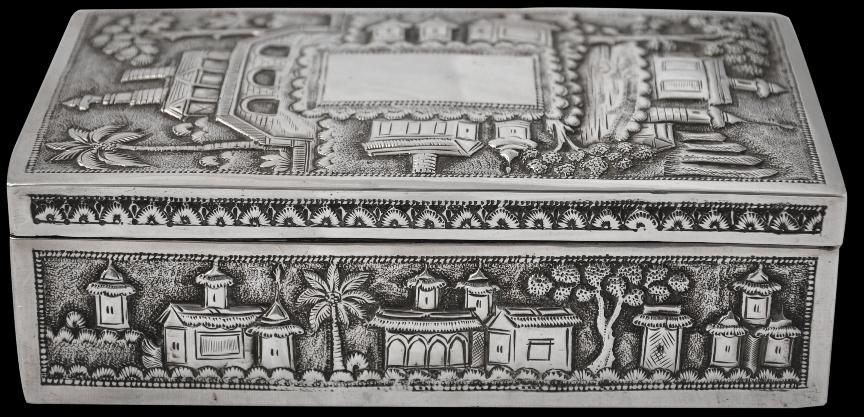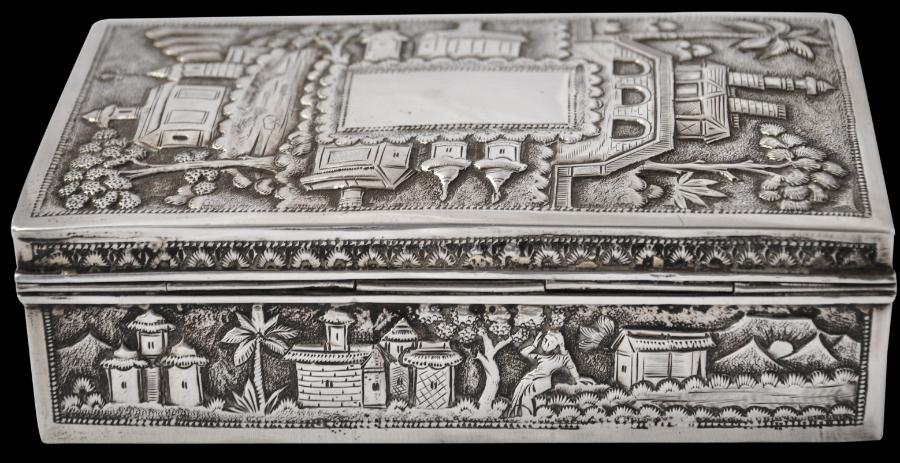
Indian Colonial Silver Calcutta
Silver Cheroot Box
Calcutta, India
circa 1890
length: 15.7cm, width: 8.3cm, height: 4.6cm, weight: 364g
This rectangular silver box with a hinged lid and decorated with village buildings and a solitary villager amid palm and other trees is typical of late nineteenth century silversmith work from Calcutta, which specialised in such scenes. According to Dehejia (2008), much of the silverwork of this nature was undertaken in Bhowanipore, a Calcutta suburb located between the city centre and a popular local shrine at Kalighat. Interestingly much of the work was for the colonial market (Calcutta was, after all, the principal city of British India and it had around 20,000 resident Europeans by 1900) and yet many if not most of the pieces are decorated with cartoon-like or perhaps naive representations of Indian villages and village life.
The box is decorated on all sides and on the cover. The lid fits tightly and a blank rectangular cartouche is in the middle of the cover. The silver used appears to be relatively high grade, perhaps of a higher grade than is typical of Indian silver. Wilkinson (1999) mentions that by 1900, many Bhowanipore silversmiths were using sterling standard sheet silver imported from England.
Provenance
UK art market
References
Wilkinson, W.R.T., Indian Silver 1858-1947, 1999; and Dehejia, V., Delight in Design: Indian Silver for the Raj, Mapin, 2008.
Inventory no.: 1180
SOLD





